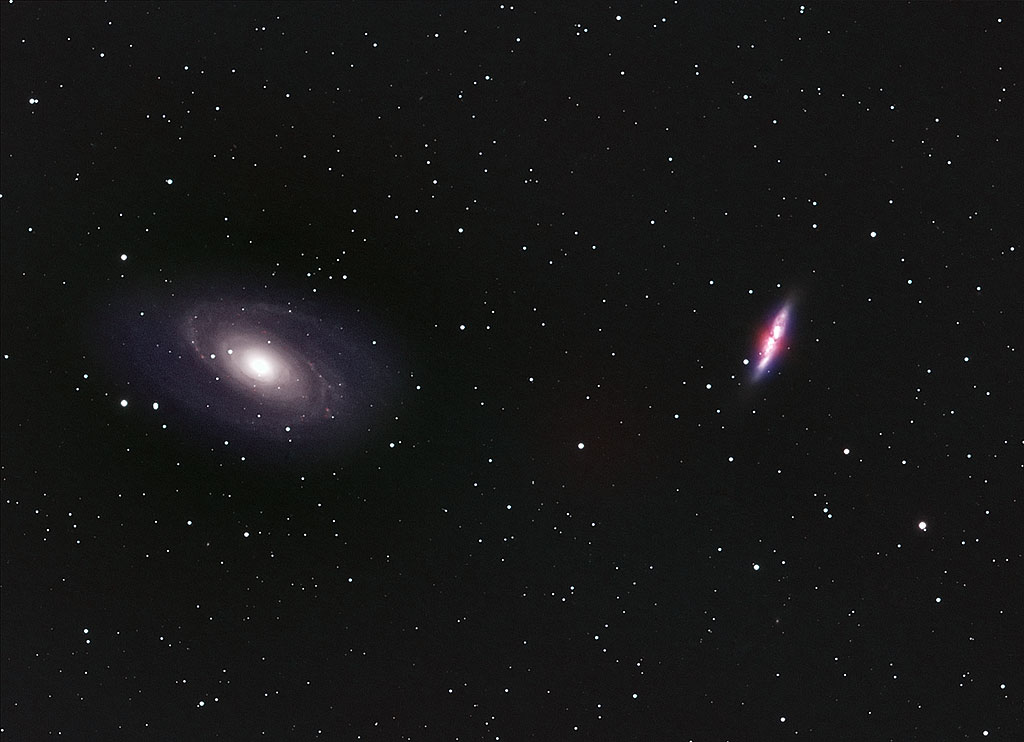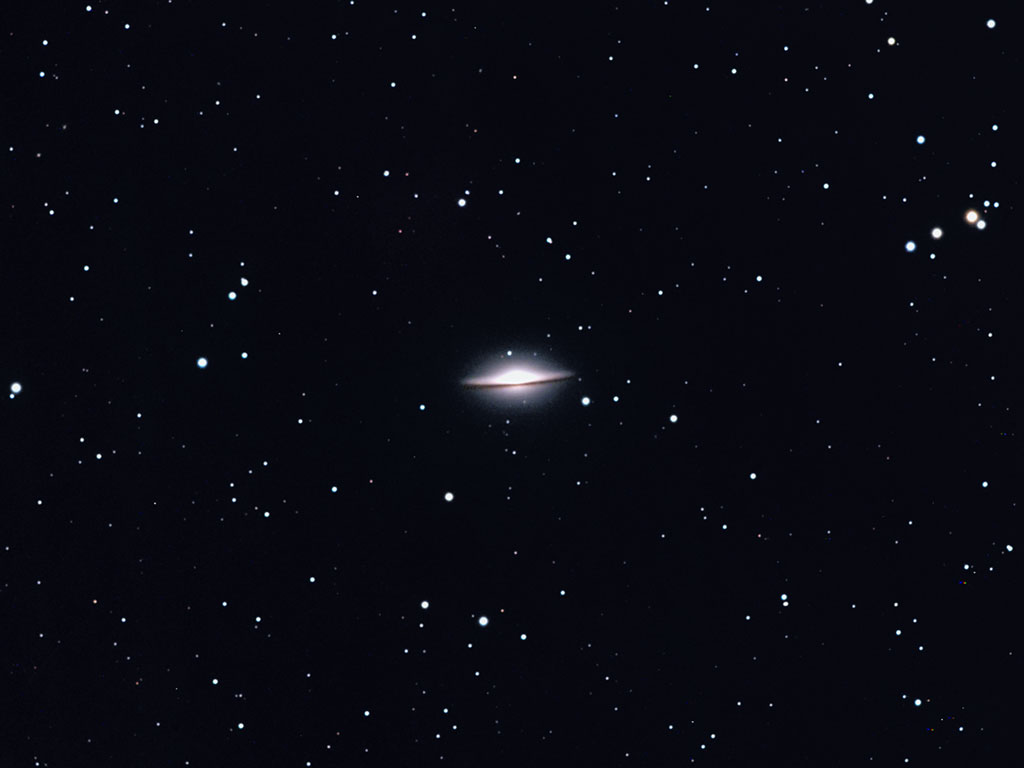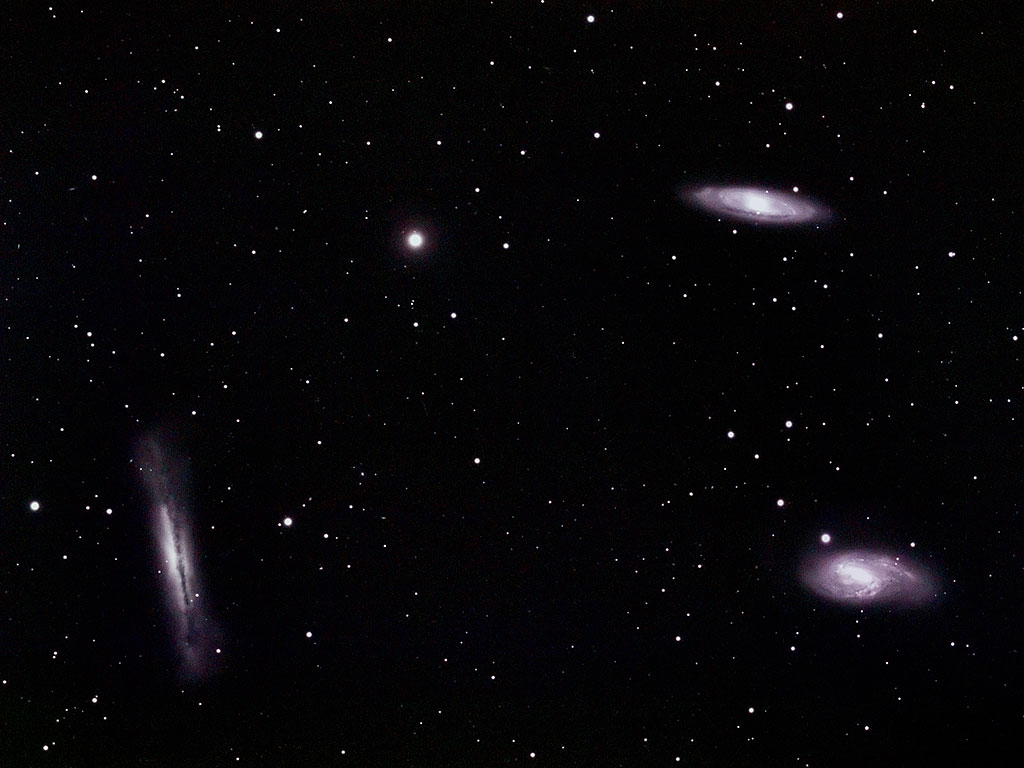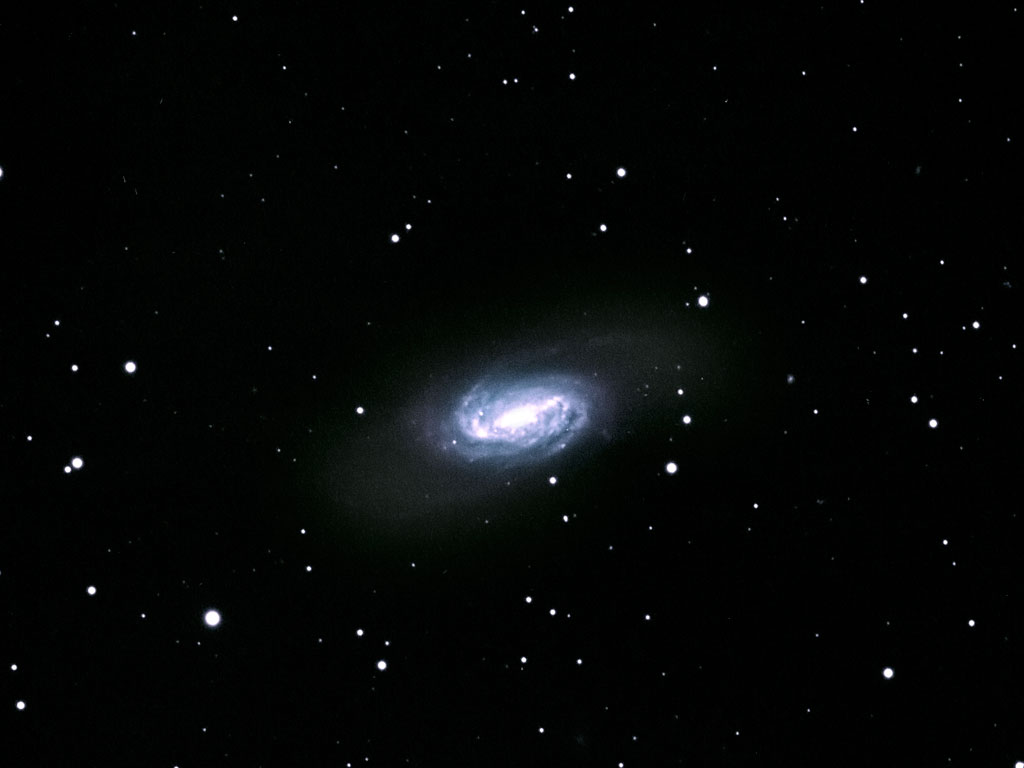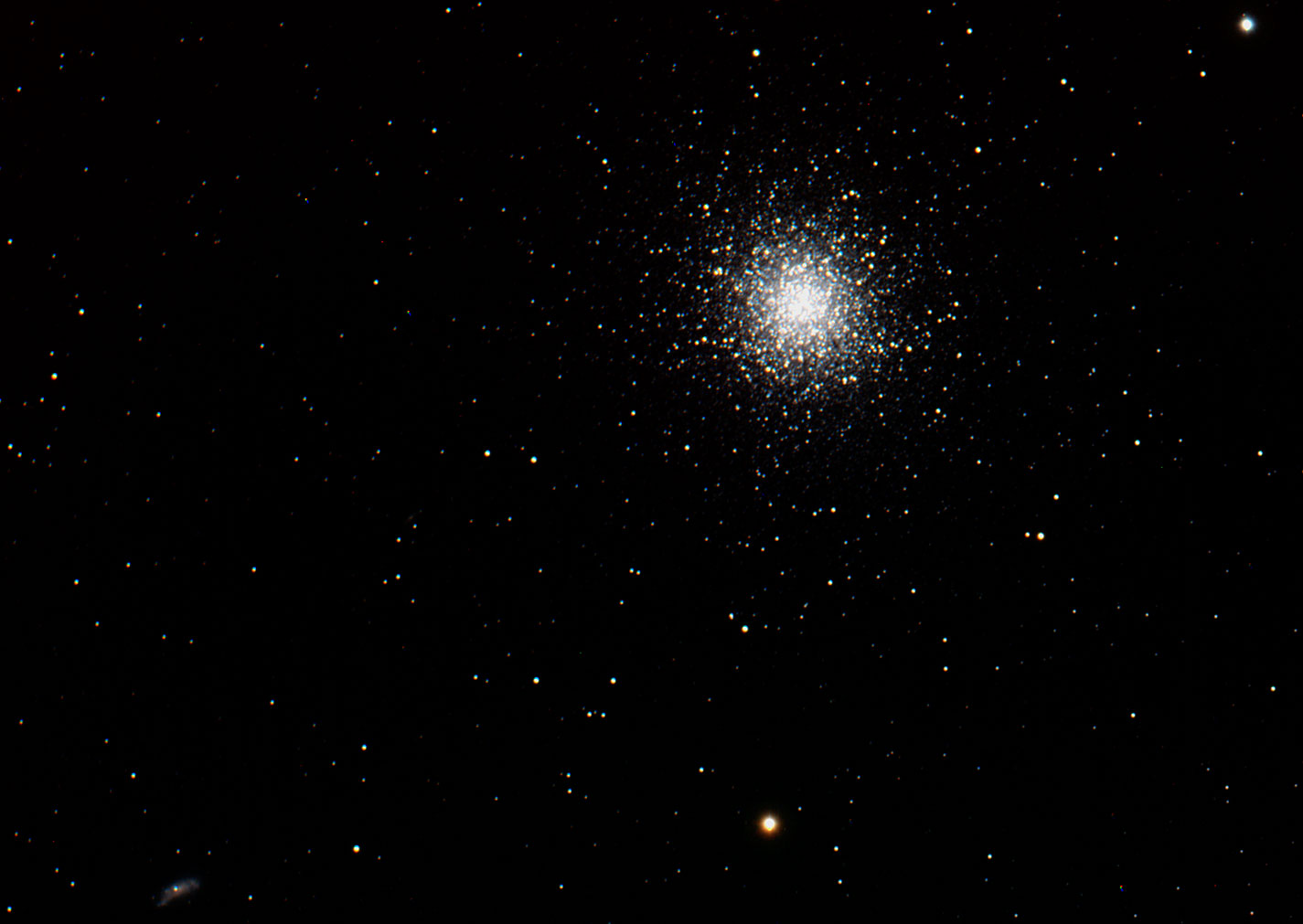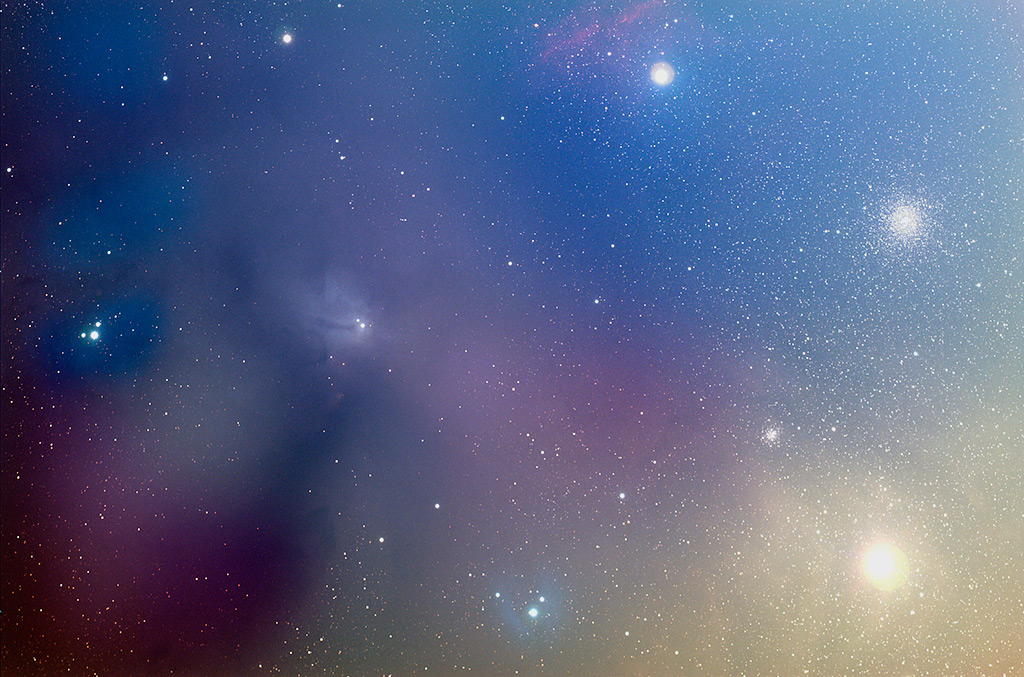M87, also known as Virgo A, is a true giant of a galaxy. It is about 120,000 light years (LY) in diameter, compared to 100,000 LY for the Milky Way (and it is globular in shape). Its mass, measured by the motion of stars in its outer regions, is 2.4x1012 solar masses, compared to 5.8x1011 solar masses for the Milky Way. The superlatives don't end there. M87 harbors a supermassive black hole at its center. The mass of the black hole itself is estimated as 6.4x109 solar masses. In practical terms, the black hole weighs nearly 6-1/2 billion times as much as our Sun. It is among the most massive black holes known. Unlike the Milky Way's quiescent central black hole, M87’s is active. Visible in the image above is a jet of matter that is being ejected from center of M87 by dynamical processes associated with the black hole. The jet presents an optical illusion to the Hubble and other telescopes that are capable of collecting data that permits measuring the velocity of the matter in the jet; it appears to be traveling at about 5 times the speed of light, which is not possible. This optical illusion indicates that the matter in the jet is traveling at relativistic speeds, that is, at speeds very near the speed of light. The jet is about 5,000 light years in extent—1/20th the width of the Milky Way.
Here is
one more superlative: While M87 is not terribly far away in cosmic terms at about 53 million LY, the two galaxies known collectively as UGC 7652, seen through the galaxy’s halo, are very far away. They lie at a distance of approximately 1.2 billion light years from Earth; as far as I know, they are the most distant objects that I have photographed.
The elliptical galaxy at the right edge is NGC 4478 and the smudge at the lower left is also a galaxy—PGC 41377. In fact, close inspection shows a number of dim, irregular smudges in this image. Except for UGC 7652 they are all members of the Virgo Cluster to which M87 belongs.
Takahashi TOA-150, SBIG STL-11000M; one hour with a red filter. All-Mac image.
This image itself presents to the viewer an interesting optical illusion. Hover your cursor over the image and you will see a gray line pointing to the jet. You will see that I have given this line a gradient, darkening that portion that overlays the glow of the galaxy for easier visibility. Except that I didn't apply a gradient to the line. The line is the same shade of gray from end to end. It only appears to darken where it passes over a lighter region. If you doubt this, e-mail me and I will be pleased to send you the original layered TIFF of the overlay image, where you may inspect the line in isolation in Photoshop, and which you may export as a JPEG for viewing in your web browser to assure yourself that it is the same image. |
|
